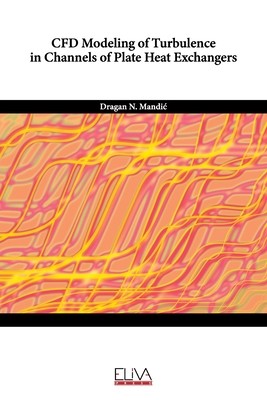
- We will send in 10–14 business days.
- Author: Dragan N Mandic
- Publisher: Eliva Press
- Year: 2021
- Pages: 126
- ISBN-10: 1636481299
- ISBN-13: 9781636481296
- Format: 15.2 x 22.9 x 0.7 cm, minkšti viršeliai
- Language: English
- SAVE -10% with code: EXTRA
CFD Modeling of Turbulence in Channels of Plate Heat Exchangers (e-book) (used book) | bookbook.eu
Reviews
Description
The plate heat exchangers are one of the most effective types of compact heat exchanger with the intensification of heat transfer. Their use is represented in many industrial processes because of their compact size, low weight and cost, reduced space required for installation and maintenance, compared to tubular heat exchangers. Heat transfer in these exchangers occurs in channels of complex geometry, formed by the two opposing profiled plate heat exchangers that are touching. Fluid flows in such ducts are unsteady due to the disruption and impact in the boundary layer, the secondary-reverse flow and swirl small extent. The task this study is to compare the operating parameters of plate heat exchangers obtained by CFD simulation with the parameters of their work in real working conditions. The results show that in a certain domain Re numbers (from 8900 to 27650), CFD simulation can predict the intensity of the exchange of heat and fluid flow with few exceptions, the output temperature of the fluid and also their pressure drop. Modeling fluid flow can indicate the distribution of shear stresses which are important for predicting the contamination plate heat exchangers.
EXTRA 10 % discount with code: EXTRA
The promotion ends in 21d.13:43:00
The discount code is valid when purchasing from 10 €. Discounts do not stack.
- Author: Dragan N Mandic
- Publisher: Eliva Press
- Year: 2021
- Pages: 126
- ISBN-10: 1636481299
- ISBN-13: 9781636481296
- Format: 15.2 x 22.9 x 0.7 cm, minkšti viršeliai
- Language: English English
The plate heat exchangers are one of the most effective types of compact heat exchanger with the intensification of heat transfer. Their use is represented in many industrial processes because of their compact size, low weight and cost, reduced space required for installation and maintenance, compared to tubular heat exchangers. Heat transfer in these exchangers occurs in channels of complex geometry, formed by the two opposing profiled plate heat exchangers that are touching. Fluid flows in such ducts are unsteady due to the disruption and impact in the boundary layer, the secondary-reverse flow and swirl small extent. The task this study is to compare the operating parameters of plate heat exchangers obtained by CFD simulation with the parameters of their work in real working conditions. The results show that in a certain domain Re numbers (from 8900 to 27650), CFD simulation can predict the intensity of the exchange of heat and fluid flow with few exceptions, the output temperature of the fluid and also their pressure drop. Modeling fluid flow can indicate the distribution of shear stresses which are important for predicting the contamination plate heat exchangers.


Reviews